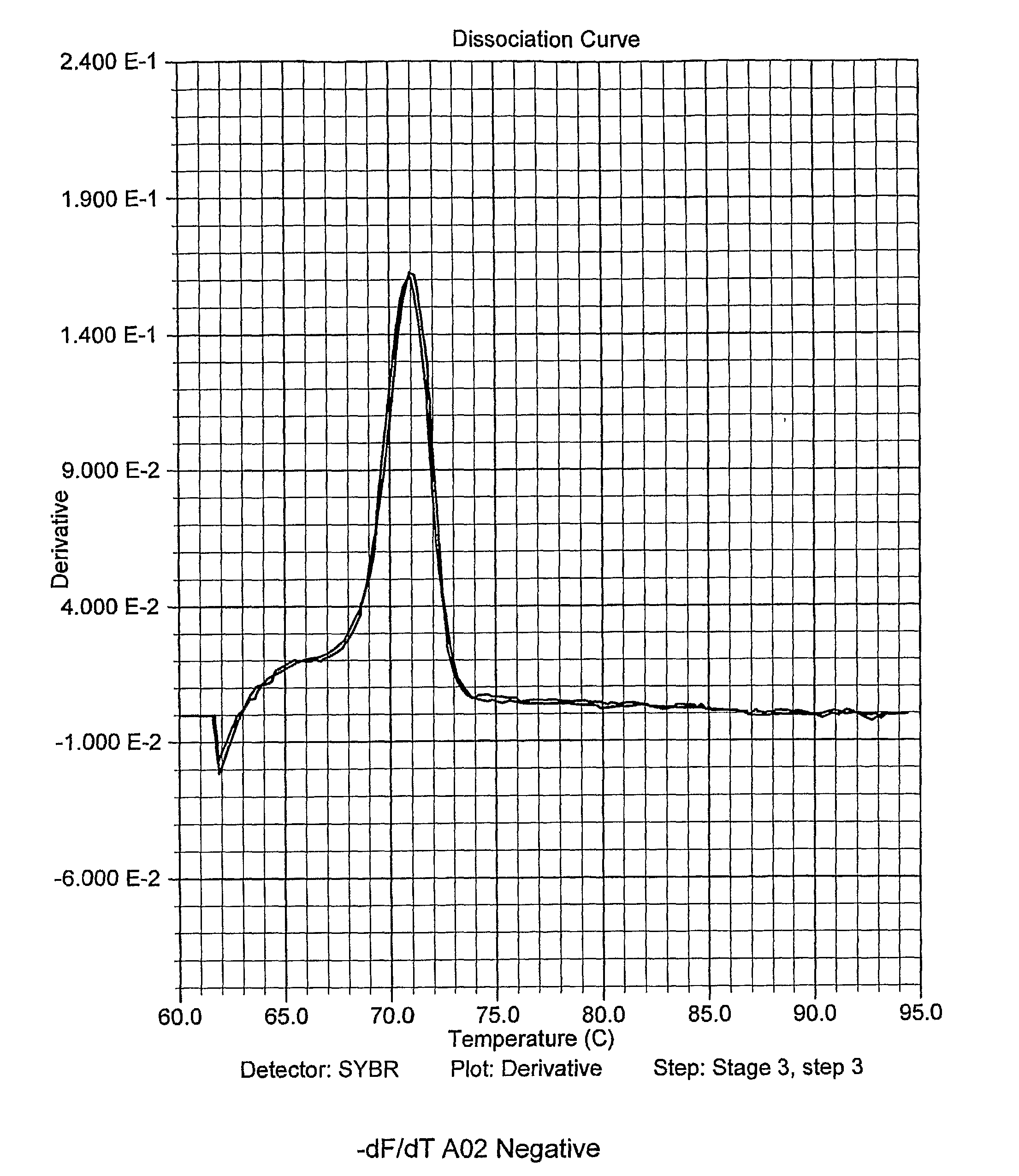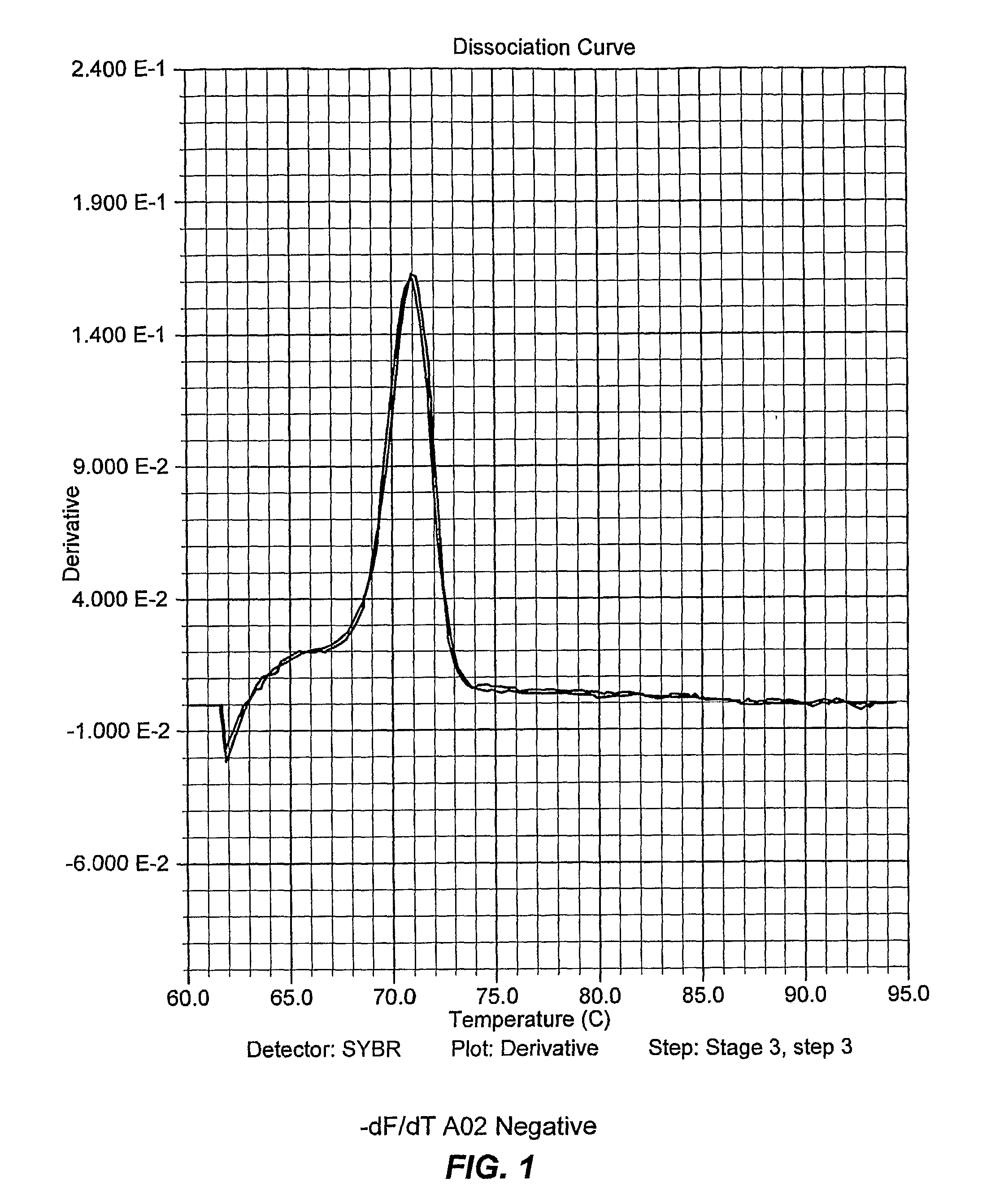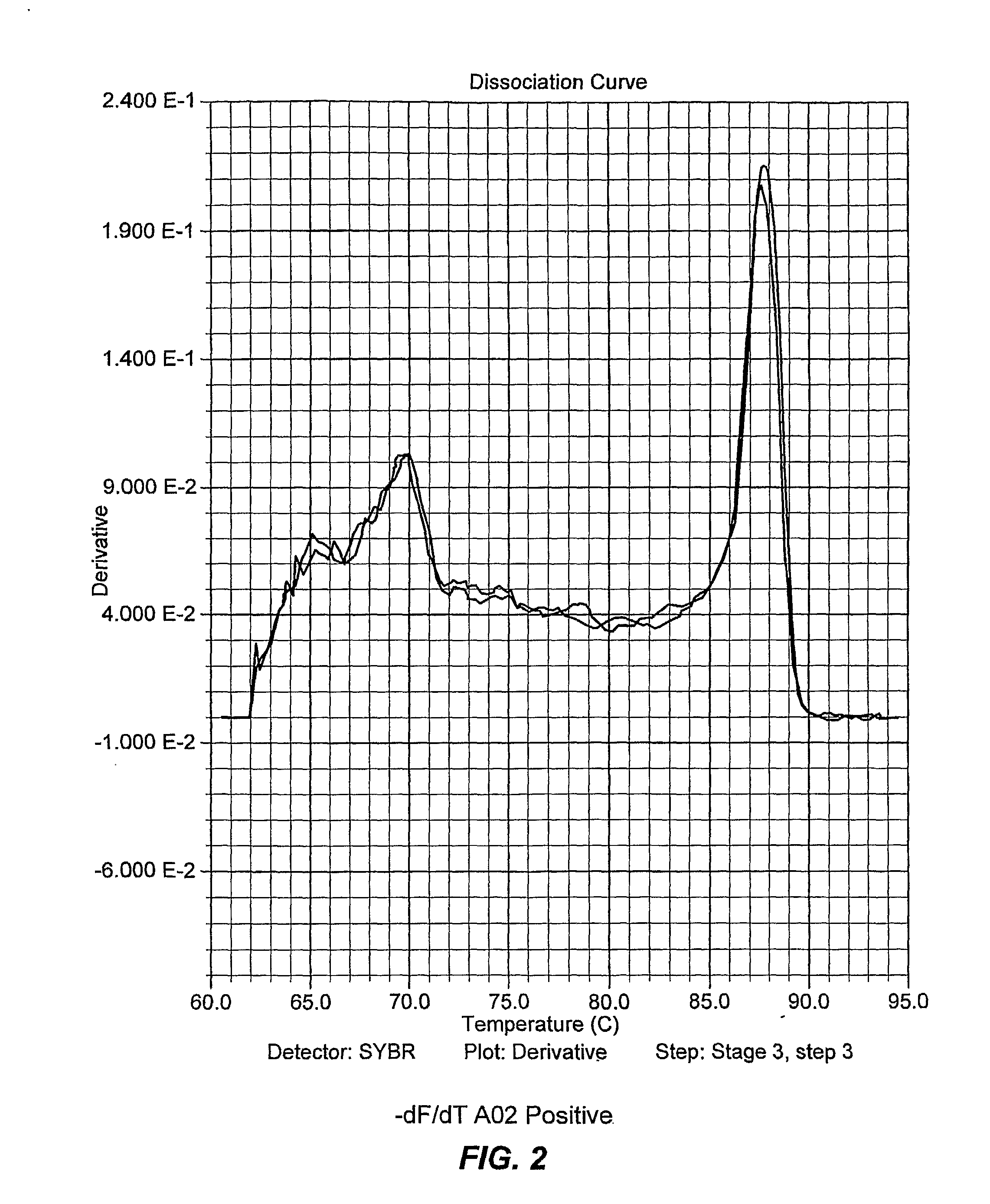Genotyping Hla Loci
a technology of hla loci and gene typing, applied in the field of gene typing hla loci, can solve the problems of inability to differentiate between many of the alleles known to exist in the population, time-consuming and labor-intensive three methods performed by highly trained medical technologists, and insufficient direct hla sequencing for most typing needs, so as to achieve the effect of rapid turn-around time of hla typing and faster results
- Summary
- Abstract
- Description
- Claims
- Application Information
AI Technical Summary
Benefits of technology
Problems solved by technology
Method used
Image
Examples
example 1a
[0104]Human genomic DNA was prepared from whole blood using heparinized vacutainers and phenol extraction (The Nucleic Acid Protocols Handbook; March 2000, Pages 3-7). HLA-A typing was performed using commercially available kits from Pel-Freeze. Additional HLA-A defined DNA samples were obtained from the European Collection of Cell Cultures (Wiltshire, U.K.). DNA samples were stored at −20° C. until ready for use.
example 1b
Mechanical Systems Used to Perform the Invention
[0105]The 7900HT sequence detection system from Applied Biosystems and Dell desktop computer was used for thermocycling and fluorescent detection (SDS software version 2.1). 384-well, optically clear, thermocycling reaction plates from Applied Biosystems were used as reaction vessels and covered with optically clear adhesive covers prior to thermocycling.
example 1c
Materials and Methods
[0106]2× Mastermix: Buffer (6.0 mM MgCl2, 20 mM Tris-Cl pH 8.3, 100 nM KCl, 0.02% Tween 20, 1.2% glycerol, dNTP's 0.4 mM dATP, 0.4 mM dCTP, 0.4 mM dGTP, and 0.8 mM dUTP), AmpliTaq® DNA polymerase (Applied Biosystems) 0.125 U / uL, and SYBR® Green I diluted to 1 / 40,000 (Molecular Probes Cat#S-7563)
[0107]10 uL of 2× mastermix is transferred to each well. Primers, DNA sample, and ddH2O (if necessary) are added to bring the final reaction volume to 20 uL. The sample concentration is 1 ng / uL or 20 ng total DNA.
[0108]A two step PCR thermocycling profile is used to optimize primer pairs and when testing sample DNA: Heat to 95 C for 90 seconds; then 38 cycles at 95° C. 15 sec and 64° C. for 60 sec (anneal and extension combined). After the run, the temperature is lowered to 4° C. for 60 seconds then the melt curve cycle begins. The temperature rises from 60° C. to 95° C., ramping at a rate of 2° C. per minute.
[0109]As discussed, ApoB was chosen as the negative control; it...
PUM
| Property | Measurement | Unit |
|---|---|---|
| melting temperature | aaaaa | aaaaa |
| Tm | aaaaa | aaaaa |
| Tm | aaaaa | aaaaa |
Abstract
Description
Claims
Application Information
 Login to View More
Login to View More - R&D
- Intellectual Property
- Life Sciences
- Materials
- Tech Scout
- Unparalleled Data Quality
- Higher Quality Content
- 60% Fewer Hallucinations
Browse by: Latest US Patents, China's latest patents, Technical Efficacy Thesaurus, Application Domain, Technology Topic, Popular Technical Reports.
© 2025 PatSnap. All rights reserved.Legal|Privacy policy|Modern Slavery Act Transparency Statement|Sitemap|About US| Contact US: help@patsnap.com



